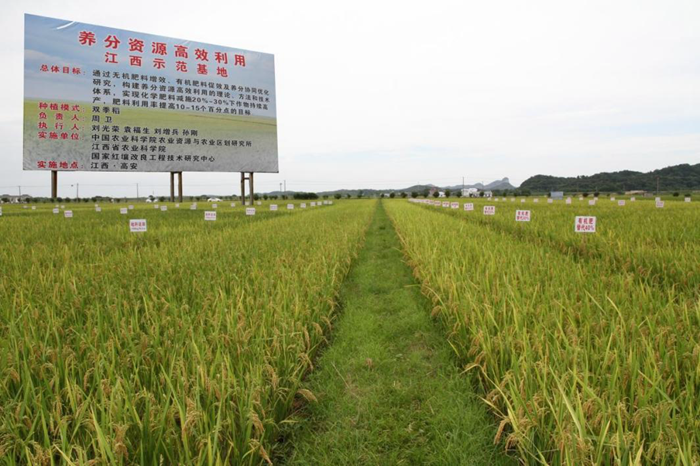National Science and Technology Awards
-

Large-scale identification, improvement, and utilization of elite maize germplasm (the second prize of the National Science and Technology Progress Awards of China)
The research team led by Prof. Wang Tianyu at the Institute of Crop Sciences of CAAS studied the epidemic occurrence of northern leaf blight, southern leaf blight, sheath blight, and stalk rot in the main maize production areas of China, clarified the response characteristics of maize growth and development to drought stress, and tackled the difficulties of low accurate evaluation of disease and d... -

Breeding and application of Zhongjiazao 17 and series super-high-yield early-season indica rice varieties for special purposes (the second prize of the National Science and Technology Progress Awards of China)
The research team led by Hu Peisong at China National Rice Research Institute of CAAS has focused on the breeding and application of super-high-yield early-season indica rice varieties for special purposes in the middle and lower reaches of the Yangtze River, China. They aim to solve three outstanding technical difficulties: rotten seedlings caused by low temperature in the seedling stage, the bot... -

Creation and application of key technologies for quality and safety control of livestock and poultry feed (the second prize of the National Science and Technology Progress Awards of China)
The research team led by Qin Yuchang at the Institute of Animal Sciences of CAAS has made many breakthroughs in key technologies, such as the detection of illegal additives and toxic & harmful substances in feed, the quality and safety control during the feed processing process, and the establishment of feed processing traceability system. These breakthroughs construct a whole industry chain feed ... -

Key technologies for safety control and quality improvement of milk and dairy products (the second prize of the National Science and Technology Progress Awards of China)
China’s dairy industry faced severe safety and quality challenges in past decades: the absence of essential data for risk assessment, weak safety control technology, and backward quality improvement techniques. The Milk Research Team at the Institute of Animal Sciences of CAAS developed the “Quality and Safety Risk Assessment for Milk and Dairy products” database, which reveals the types of major ... -

Development and application of novel veterinary drugs for preventing and treating high-incidence diseases of dairy cows (the second prize of the National Science and Technology Progress Awards of China)
With 20 years of continuous effort, Prof. Li Xiubo’s research team at the Feed Research Institute of CAAS has established the world’s largest pathogenic bacteria database for dairy cows, determined the pathogenic genera and distribution patterns of high-incidence pathogens such as mastitis and endometritis in dairy cows, and discovered a series of novel pharmaceutical targets for dairy cow disease... -

Drought-resistant and rain-adaptive planting technologies and their applications for dryland agriculture in northern China (the second prize of the National Science and Technology Progress Awards of China)
The research team led by Mei Xurong at the Institute of Environment and Sustainable Development for Agriculture of CAAS has been conducting synergic and innovative research for over 16 years. In view of the issues related to frequent drought and variable climate, excessive soil and water use, and decline in production stability in China’s northern dryland, the research has revealed the changing dy... -

Key Technology for efficient utilization of nutrient resources of major food crops (the second prize of the National Science and Technology Progress Awards of China)
The research team led by Zhou Wei at the Institute of Agricultural Resources and Regional Planning of CAAS aimed to reduce chemical fertilizer application and increase fertilizer use efficiency for the main food crops such as corn, wheat, and rice. The research team has established a new fertilizer recommendation approach based on yield response and agronomic efficiency by analyzing the nutrient d...



